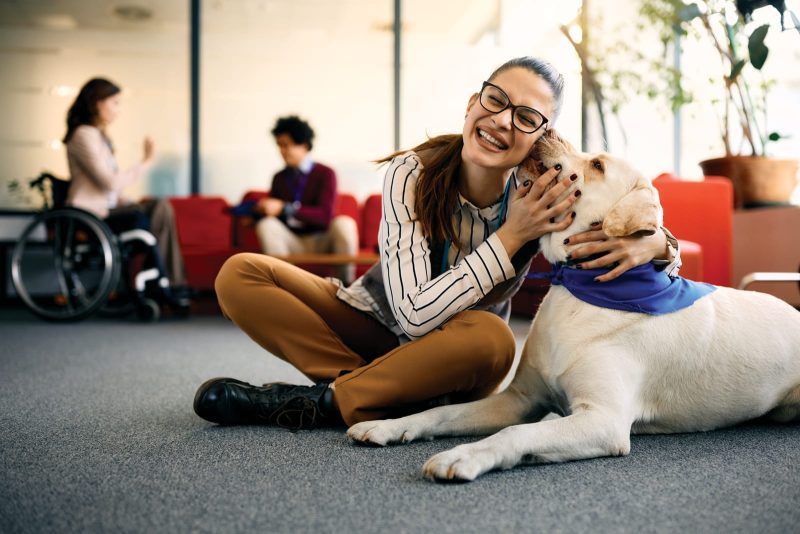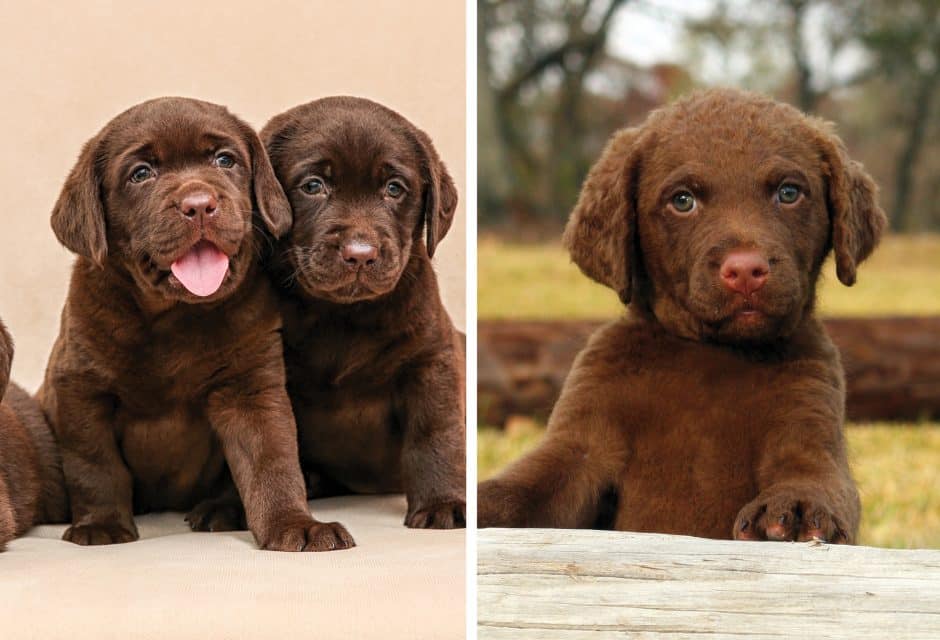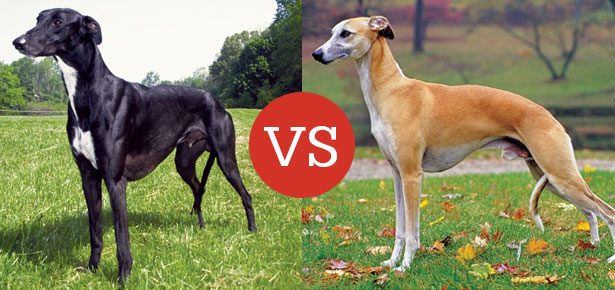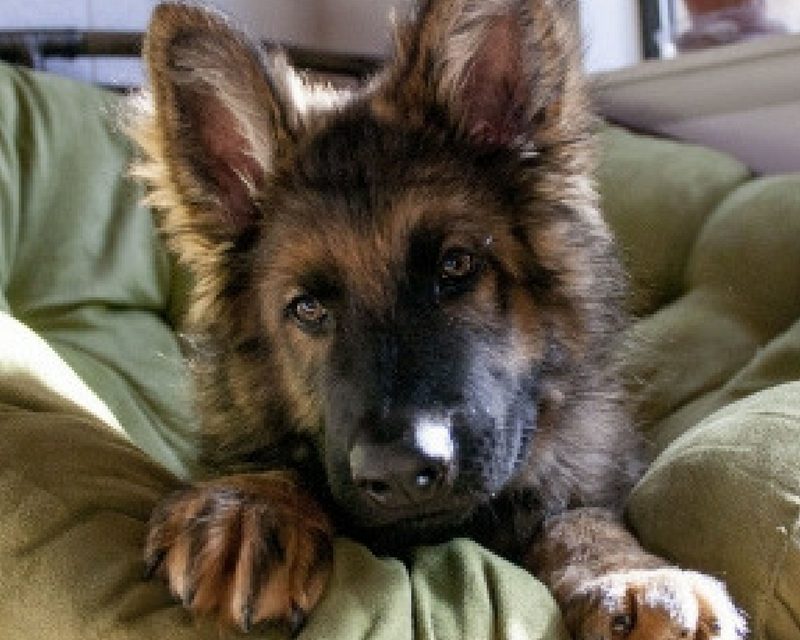
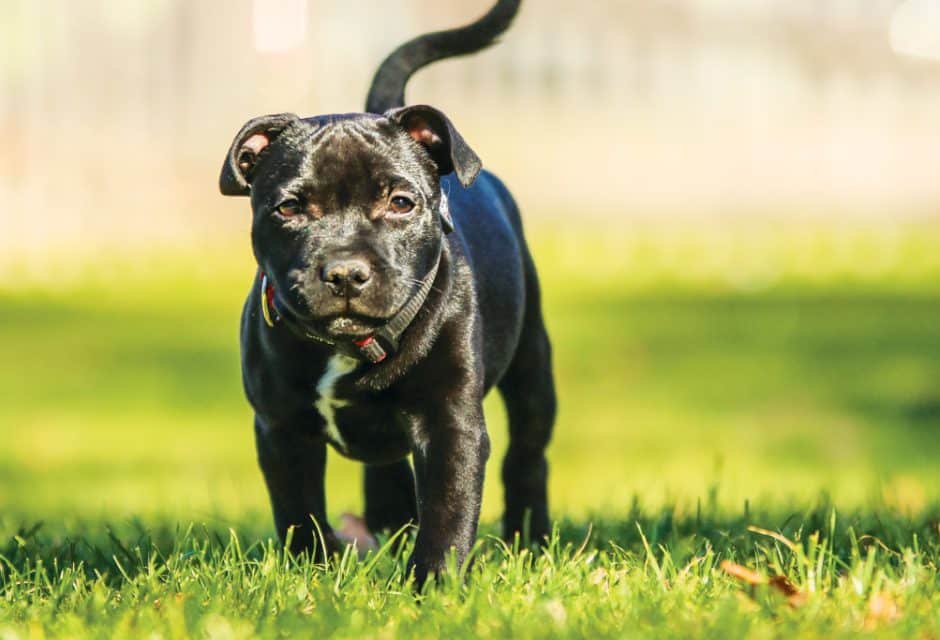
The American Staffordshire Terrier
Hopelessly devoted to you. Get to know this American treasure

The American Staffordshire Terrier goes by a few names—AmStaff and Staffie, for starters, but you’d likely know him to see him. But how much do you really know about this oftentimes misunderstood breed?
In the dog world, it’s hard to think of a breed that more perfectly exemplifies the importance of not judging a book by its cover. With his powerful and muscular frame, large head, and that intense gaze… this dog has presence. Does he appear intimidating? To some. But in actuality, the AmStaff is perhaps the sweetest, most loving and hopelessly devoted breed in all of dogdom.
Like other “bully breeds,” the American Staffordshire Terrier’s origins date back to England during a period in the 1800s when these dogs were used in various blood sports to bait and fight each other or large animals like bulls and bears. The “sports” were cruel and inhumane on every level conceivable; however, a number of today’s wonderful breeds emerged and evolved from them; the American Staffordshire Terrier is one of them.
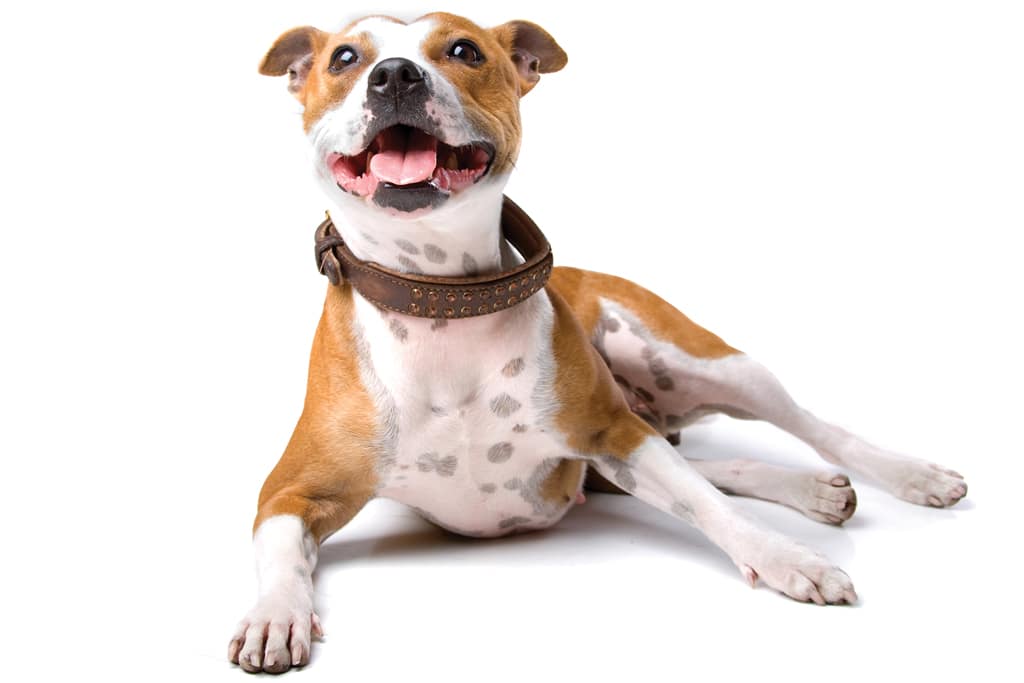
eriklam/Bigstock
T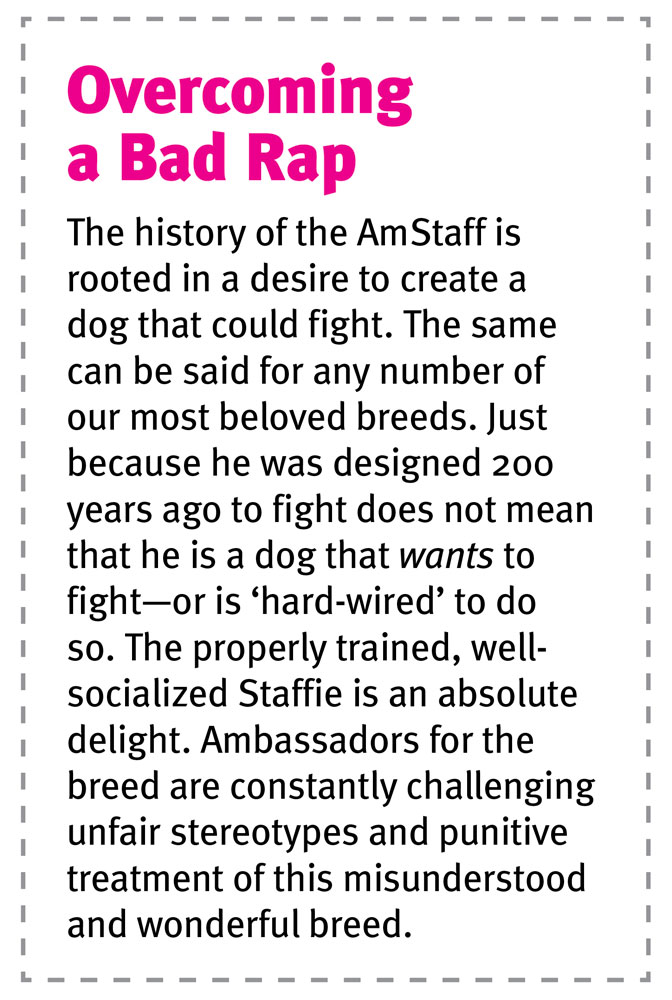
With their stocky and muscular frames, large jaws, and that tenacious terrier spirit, the early AmStaffs were sought after for their role in dog-fighting, up until the practice was banned in the 1830s. The ban didn’t completely end the practice, as enforcement was an issue, but the bully breeds’ purpose shifted to include general-purpose work and family companionship.
As early as the 1870s, immigrants from England and Ireland brought their ‘pit dogs’ to America. At the time, they were known as Pit Bull Terriers, American Bull Terriers, or even Yankee Terriers. Regrettably, some were used for dog-fighting in the early days. But Americans thankfully saw much greater potential for these dogs. They embraced them for their usefulness as general-purpose farm dogs and hunting companions and discovered quickly that—despite their tough appearance and origin—they were loving and devoted family members.
Embraced by American culture almost from day one, the AmStaff evolved into a distinctly American breed, one considerably larger than its close cousin, the Staffordshire Bull Terrier. Since the 1930s, AmStaff fanciers made a conscious effort to focus on honing temperament and type through selective, thoughtful breeding. Dogs that seemed aggressive were pulled out of the reproductive gene pool. Beefing up the breed in size and developing an extremely muscular and agile body type was also prioritized.
The breed was recognized by the American Kennel Club (AKC) in 1936, though he was known still at that time as the Staffordshire Terrier. It wasn’t until 1972 that the AKC switched the breed’s name to recognize him as a uniquely-American breed—the American Staffordshire Terrier.
Today’s AmStaff is a medium-sized dog that moves with great ease and agility. For his size—the AKC accepts the breed at 18 to 19 inches at the shoulders for males; 17 to 18 for females is preferred—he is extremely strong. The AKC standard emphasizes a well-proportioned dog with a calm disposition. A relatively popular breed, the AmStaff today ranks 85 of the 197 breeds in the AKC.
Most Popular Dogs in the US
According to the most recent AKC registration statistics (2022)
[1] French Bulldog
[2] Labrador Retriever
[3] Golden Retriever
[4] German Shepherd
[5] Poodle
[6] Bulldog
[7] Rottweiler
[8] Beagle
[9] Dachshund
[10] German Shorthaired Pointer
[85] American Staffordshire Terrier
The American Staffordshire Terrier coat is very short, stiff, and glossy. The AKC accepts the coat in any colour, solid, parti, or patched. All white, more than 80 percent white, black and tan, and liver colours are not encouraged.
“Loyal, smart, and loving. For those who simply love to love their dogs, the rewards here will be plenty.”
So, what’s this breed like to live with? I’d say he’s an American treasure.
Staffies are known for being one of the most (if not the most) docile and gentle among the bully breeds. They are active and playful, but not nervous or edgy. In short, it is incredibly easy to simply be around the AmStaff.
As a family companion, the American Staffordshire Terrier has a well-earned reputation for being exceptionally patient with kids. This is a breed that becomes positively devoted to his family. He craves companionship and affection. For those who simply love to love their dogs, the rewards here will be plenty. The AmStaff is loving and loyal; he will not thrive in a home where he is an outsider in any way, shape, or form. This is a family companion through and through.
This is not an outdoor dog. His short coat aside, he’d pine for time with his people. And while he may look intimidating, he’s the wrong choice for those in search of a dog to guard the home. This notoriously friendly breed is most likely to greet strangers with a wagging tail and a big, beautiful smile.
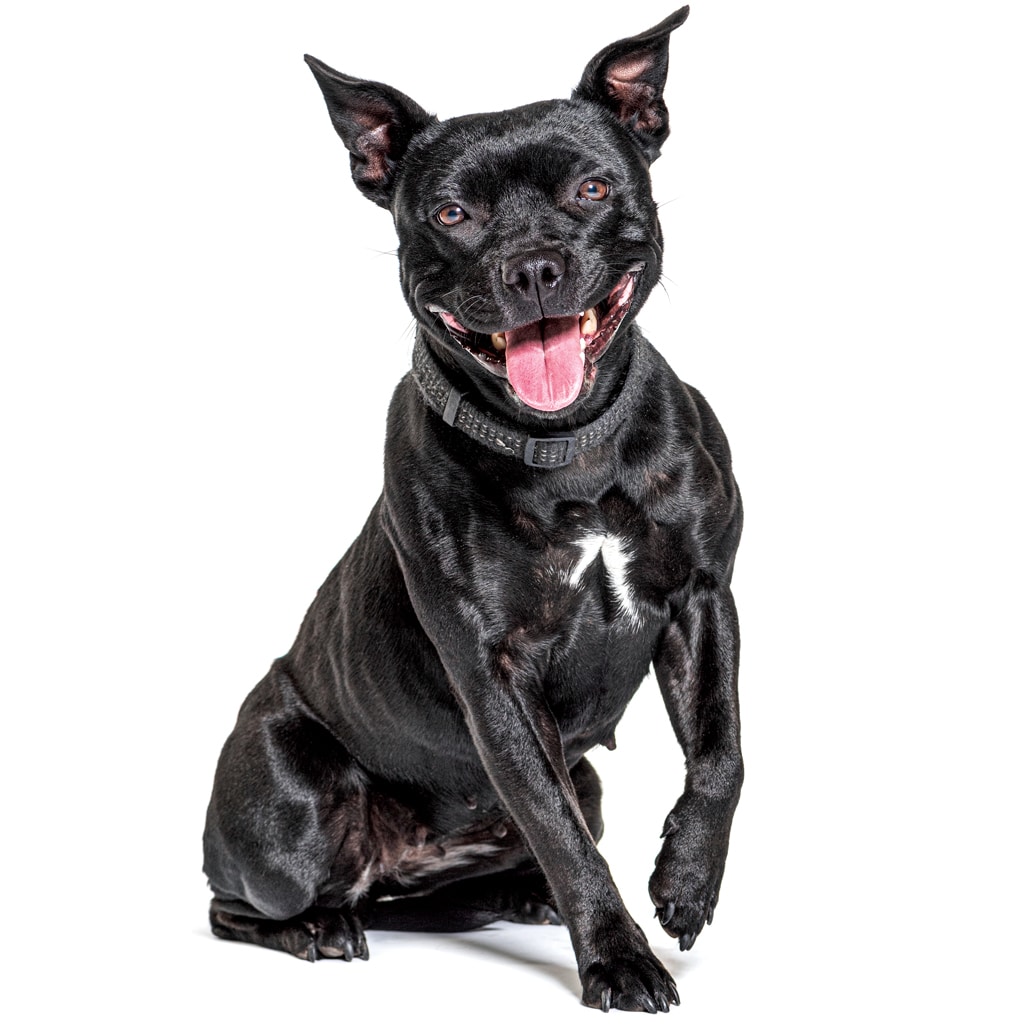
Life on White/Bigstock
All dog guardians have a responsibility to raise well-socialized pets with good manners. But with a strong and powerful breed, this responsibility is particularly important.
Your AmStaff should be introduced from an early age to a wide range of people and pets. The breed’s reputation for being aggressive towards other dogs may be an unfair stereotype—responsible breeders do not keep ‘dog hot’ dogs in their breeding programs—but leaving an untested AmStaff unsupervised with other dogs isn’t advised. The same can really be said for all powerful dogs, most namely those who lack training and are not well socialized.
Letting your AmStaff ease into new friendships with other pets is a good idea. Common sense plays a role here—he’ll simply do better if he doesn’t have a new companion dropped into his orbit.
And while it is true that the AmStaff is a couch-cuddler of legendary proportions, this is an athletic breed that absolutely needs physical exercise to thrive. The American Staffordshire Terrier’s strength and agility, combined with an intense desire to please his people, make the breed an exceptional candidate for any number of canine sports and activities—Agility, Flyball, Dock diving… you name it, and this up-for-anything lovebug will give it a shot and, likely, revel in the fun and challenges.
One other aspect of life with the AmStaff that’s worth mentioning is that he is known to dig. Terriers and perfectly manicured gardens and lawns… well… just know what you might be getting in for.
Profile: The American Staffordshire Terrier
Size: Medium
AmStaff’s stand between 17 and 19 inches at the shoulder. They are heavily muscled and extremely powerful for their size.
Activity Level: 4/5
Daily walks are an absolute minimum for this active breed. Better yet, take advantage of the AmStaff’s strength, agility, and eagerness to please and partake in some canine sports!
Grooming: 2/5
With his short coat, the Staffie’s grooming needs are minimal. Just the basics are required to keep him looking dapper– some regular brushing and keeping those nails trimmed.
Heritage:
A bull-and-terrier breed, used originally in England and Ireland for baiting and fighting purposes.
For more information on AmStaff rescue in the U.S., visit staffordshireterrier.rescueme.org. In Canada, visit staffordshireterrier.rescueme.org/ca
Like with other bully breeds, anti-dog legislation can rear its ugly head. State by State and town by town, rules vary. This breed has been banned in some areas and can also be targeted as problematic for home insurance. Hopefully, the tide is turning, as we do see some communities repeal breed-specific legislation and focus on punishing the deed not the breed.
Health-wise, the AmStaff is quite a healthy and hearty breed, although as with any purebred it is critical to work with a breeder who is committed to both the health and good temperament of their dogs.
As a breed, the American Staffordshire Terrier is largely misunderstood. His muscular frame and intense gaze may strike you as intimidating, but by nature he’s a soft-hearted, loving, and extremely eager-to-please dog. There’s a lot more than meets the eye when it comes to this misunderstood “tough guy.” To me, he is among the finest of breeds, and I think it would be an honour to experience that kind of love and loyalty.
If you like the American Staffordshire Terrier, you might also consider the…
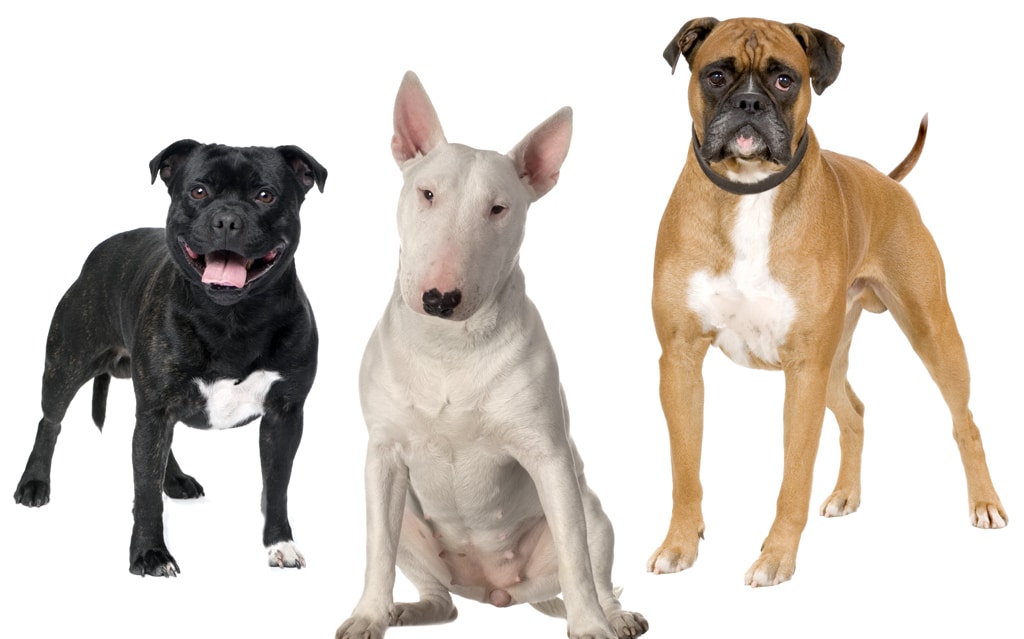
Life on White/bigstock.com
Staffordshire Bull Terrier Bull Terrier Boxer
» Read Your Breed For more breed profiles, go to moderndogmagazine.com/breeds
Join the newsletter and never miss out on dog content again!
"*" indicates required fields
By clicking the arrow, you agree to our web Terms of Use and Privacy & Cookie Policy. Easy unsubscribe links are provided in every email.
